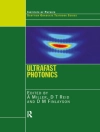This monograph presents the latest developments and applications of computational tools related to the biosciences and medical engineering. Computational tools such as the finite element methods, computer-aided design and optimization as well as visualization techniques such as computed axial tomography open completely new research fields with a closer joining of the engineering and bio/medical area. Nevertheless, there are still hurdles since both directions are based on quite different ways of education. Often even the “language” is sometimes different from discipline to discipline. This monograph reports the results of different multi-disciplinary research projects, for example, from the areas of scaffolds and synthetic bones, implants and medical devices and medical materials. It is also shown that the application of computational methods often necessitates mathematical and experimental methods.
Jadual kandungan
1 A computational based design and optimization study of scaffold architectures.- 2 DESIGN AND DEVELOPMENT OF AN EXPERIMENTAL CLAW-GRIP, FOREFINGER SIMULATOR. PART I: KINEMATICS.- 3 Mathematical and Computational Aspects in Partial Ventriculectomy.- 4 An Optimization of the Manufacturing Process of Corporeal Screws Made of Synthetic Bone.- 5 Numerical and Biomechanical Testings in Cadaveric Auditory Ossicles Using Computer Axial Tomography.- 6 Design and Manufacturing of prosthesis of a jaw for a young patient with articular Ankylosis.












